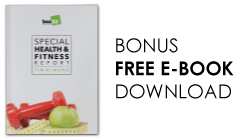At Adaptive Strength, we don’t separate rehabilitation from training. We don’t believe in temporary fixes or one-size-fits-all prescriptions. Instead, we take a strategic, movement-based approach to helping you overcome pain, move better, and perform at your best.
And that starts with one of our core principles:
Corrective strategies—not just correct exercises.
In other words, it’s not about the individual movements you do. It’s about why you’re doing them, how they fit into your larger training picture, and how they restore your body’s natural ability to move well and stay strong.
What Are Corrective Strategies?
A corrective strategy is a deliberate plan to restore movement quality by addressing the root of a dysfunction—not just the symptom. While traditional rehab often focuses on isolated muscles or movements (think clamshells, banded bridges, or endless foam rolling), we look at how your entire body moves and responds.
Corrective strategies:
- Re-train motor control
- Improve joint alignment and coordination
- Reinforce proper breathing, posture, and movement sequencing
- Use smart positioning and load to teach your body what “right” feels like
For example, a kettlebell deadlift with proper breathing and bracing is often more corrective than ten banded glute bridges. Why? Because it restores pattern, posture, and control under real-life conditions.
Why Corrective Exercises Alone Often Miss the Mark
You’ve probably seen (or been given) exercises like:
- Bird dog
- Clamshells
- Shoulder external rotation with a band
- Ankle mobility drills
- Wall angels
These can all be useful tools—but on their own, they’re often not enough. Without context, progression, or integration into full movement patterns, these exercises may provide short-term relief without creating lasting change.
That’s because pain or tightness is often the result of a dysfunctional movement pattern, not just a single weak or tight muscle.
At Adaptive Strength, we still use many of these exercises—but never in isolation or as a one-size-fits-all fix. They’re part of a broader corrective strategy, often used as movement prep, pattern primers, or regressions to build control before progressing to more integrated, loaded movements.
It’s not just about choosing the right exercise—it’s about using it at the right time, in the right way, to solve the right problem.
How We Integrate Rehab, Training, and Injury Prevention
Our approach doesn’t separate “rehab mode” from “training mode.” Instead, we build your rehab into your training and progress it gradually and meaningfully.
Here’s how we do it:
1. Assess and identify the pattern problem
We don’t just look at where it hurts—we look at how you move. That includes how you breathe, how you brace, how your joints stack, and how your body compensates.
2. Start with pattern retraining
We use foundational drills (like breathing resets, crawling, or half-kneeling postures) to restore core control, stability, and mobility.
3. Integrate into your warm-up and main training
Corrective work doesn’t sit on its own island. It’s built into your warm-ups, paired with strength movements, or progressed into loaded patterns like squats, hinges, carries, and presses.
4. Challenge the pattern
Once the movement improves, we gradually increase complexity, speed, or load. This ensures the correction “sticks” under real-world conditions.
5. Progress toward performance goals
The end goal isn’t just to “feel better”—it’s to be stronger, more capable, and more resilient. Every step of the corrective strategy moves you in that direction.
Examples of Corrective Strategies in Action
Let’s look at how this plays out in real scenarios at Adaptive Strength:
Shoulder pain
Rather than just giving rotator cuff band exercises, we assess:
- Thoracic mobility
- Breathing mechanics
- Scapular control
Then we integrate loaded carries, crawling, and kettlebell arm bars to retrain the shoulder in a full-body context.
Lower back pain
We start with breathing and core control, often on the floor. Then we build into hinge patterns like kettlebell deadlifts and hip bridges—teaching the body to move load with stability and control.
Knee pain
Instead of only strengthening the quads, we explore:
- Hip stability
- Ankle mobility
- Gait mechanics
From there, we use split stance work, tempo squats, and step-ups as part of the corrective strategy—not just isolated quad exercises.
Why This Approach Feels Different—and Works Better
Corrective strategies feel different because they treat you like an athlete, not a patient. You’re not stuck doing boring, isolated drills forever. You’re retraining how your body moves and performs—progressively, with purpose.
Clients at Adaptive Strength often say things like:
“I can’t believe my pain cleared up just by learning to breathe and move better.”
“I was told I had weak glutes—but this approach actually fixed the root problem.”
“It feels like my body is working together again.”
And because our physiotherapists, exercise physiologists, and strength coaches work together under one roof in our Booragoon facility, your strategy is always clear, consistent, and effective.
Serving Perth’s Active Community with Smarter Rehab and Training
Whether you’re recovering from injury, training through pain, or just feeling “off” in your movement, our integrated model is built to support long-term results.
We help clients across Booragoon, Melville, Myaree, and greater Perth reconnect with their body, rebuild strength, and stay active with confidence.
Train to Restore, Not Just to Repair
Rehab doesn’t have to be boring, repetitive, or disconnected from your training goals. With the right strategy, every rep becomes an opportunity to restore movement, build strength, and reduce pain—for good.
At Adaptive Strength, we don’t just give you the right exercises.
We give you the right plan.
Ready to Move Better and Train Smarter?
Book your Initial Consult & Movement Assessment at Adaptive Strength and experience a corrective strategy that works—whether you’re returning from injury or looking to move at your best.
📍 Located in Booragoon | Helping Perth move, train, and perform pain-free
💪 Physiotherapy | Strength Training | Corrective Movement Coaching




